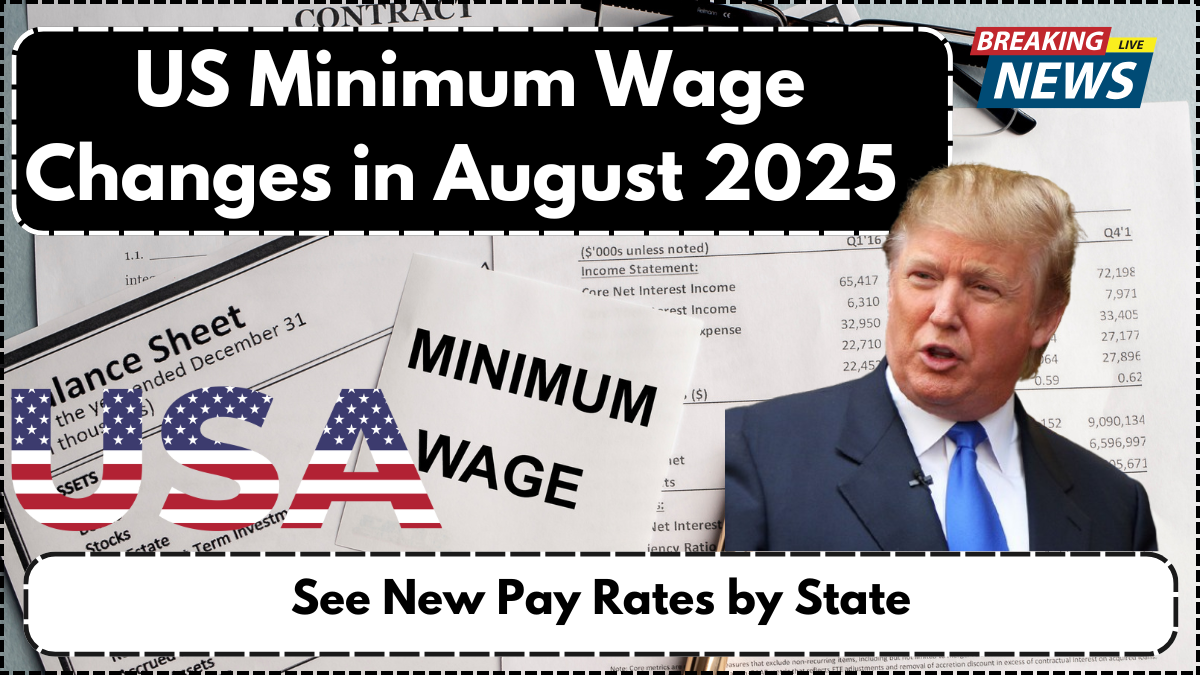As of August 2025, a significant Minimum Wage Update is reshaping paychecks across the country. In response to ongoing economic shifts and cost-of-living assessments, many U.S. states have implemented wage adjustments to ensure fairer compensation for workers. This latest wave of changes could impact millions of workers, especially those in entry-level or hourly wage positions. Here’s a breakdown of the new pay rates, why these changes matter, and what it means for employees and employers alike.

What’s Driving the August 2025 Minimum Wage Update?
The push for wage increases continues to be driven by inflation trends, political pressure, and ongoing advocacy for livable earnings. Several states have adopted legislation that ties minimum wage to inflation, resulting in automatic increases each year. Meanwhile, others have taken legislative steps this year specifically aimed at combating the affordability crisis gripping many urban and rural regions.
Additionally, the labor market’s evolving dynamics post-pandemic have spurred many regions to compete more aggressively for talent, which further encourages upward wage adjustments.
Detailed State-by-State Wage Changes
The following table provides a snapshot of the updated minimum wage rates by state effective August 1, 2025:
| State | Previous Rate (2024) | New Rate (August 2025) |
|---|---|---|
| California | $16.00 | $17.00 |
| Florida | $12.00 | $13.50 |
| New York | $15.00 | $16.00 |
| Texas | $7.25 | $8.50 |
| Washington | $15.74 | $16.60 |
| Illinois | $13.00 | $14.00 |
| Colorado | $13.65 | $14.85 |
| Arizona | $13.85 | $15.00 |
| Oregon | $14.20 | $15.45 |
| Nevada | $11.25 | $12.75 |
These figures reflect the most current Minimum Wage Update and include both legislated increases and inflation-indexed adjustments.
Key Takeaways for Workers and Employers
For workers, the August 2025 wage increases represent a critical boost, particularly in sectors like retail, hospitality, and home care, where hourly pay is the norm. It offers better financial security and keeps pace with rising living costs.
Employers, on the other hand, may need to adjust payroll budgets and reassess pricing strategies to accommodate higher labor costs. Some small businesses might feel the pinch, but others see it as a necessary move to retain talent and reduce turnover.
Regional Trends and Highlights
The most aggressive hikes came from the West Coast and Northeast, where cost-of-living is high. States like Oregon and California are pushing toward a $20 minimum by 2026. Meanwhile, southern states such as Texas are beginning to break from the federal baseline, albeit gradually. These State-by-state wage changes highlight a growing divide in economic policy at the regional level, with some states taking the lead while others lag behind.
Conclusion: A Step Toward Wage Equity
This Minimum Wage Update marks a continued national effort to close the income gap and respond to economic realities with timely policy shifts. Whether you’re an employee adjusting your budget or a business owner planning ahead, these new rates will affect financial planning for the rest of 2025 and beyond.
FAQs
What is the federal minimum wage as of August 2025?
The federal minimum wage remains at $7.25 per hour, unchanged since 2009. However, most states now exceed this baseline with their local wage laws.
Are all states required to follow the same minimum wage?
No. States can set their own minimum wages above the federal level, and many do based on economic and legislative factors.
How are minimum wage rates determined?
States typically use a combination of legislative mandates, ballot initiatives, and inflation indexing to adjust rates annually or biannually.
Will minimum wages continue to rise in 2026?
Most likely, yes. Many states have already mapped out incremental increases through 2026, and ongoing inflation will continue to drive automatic adjustments in some jurisdictions.
How can employers stay compliant with new wage laws?
Employers should consult with state labor departments, update payroll systems, and ensure public notices are current and clearly posted in workplaces.
For More Information Click Here



